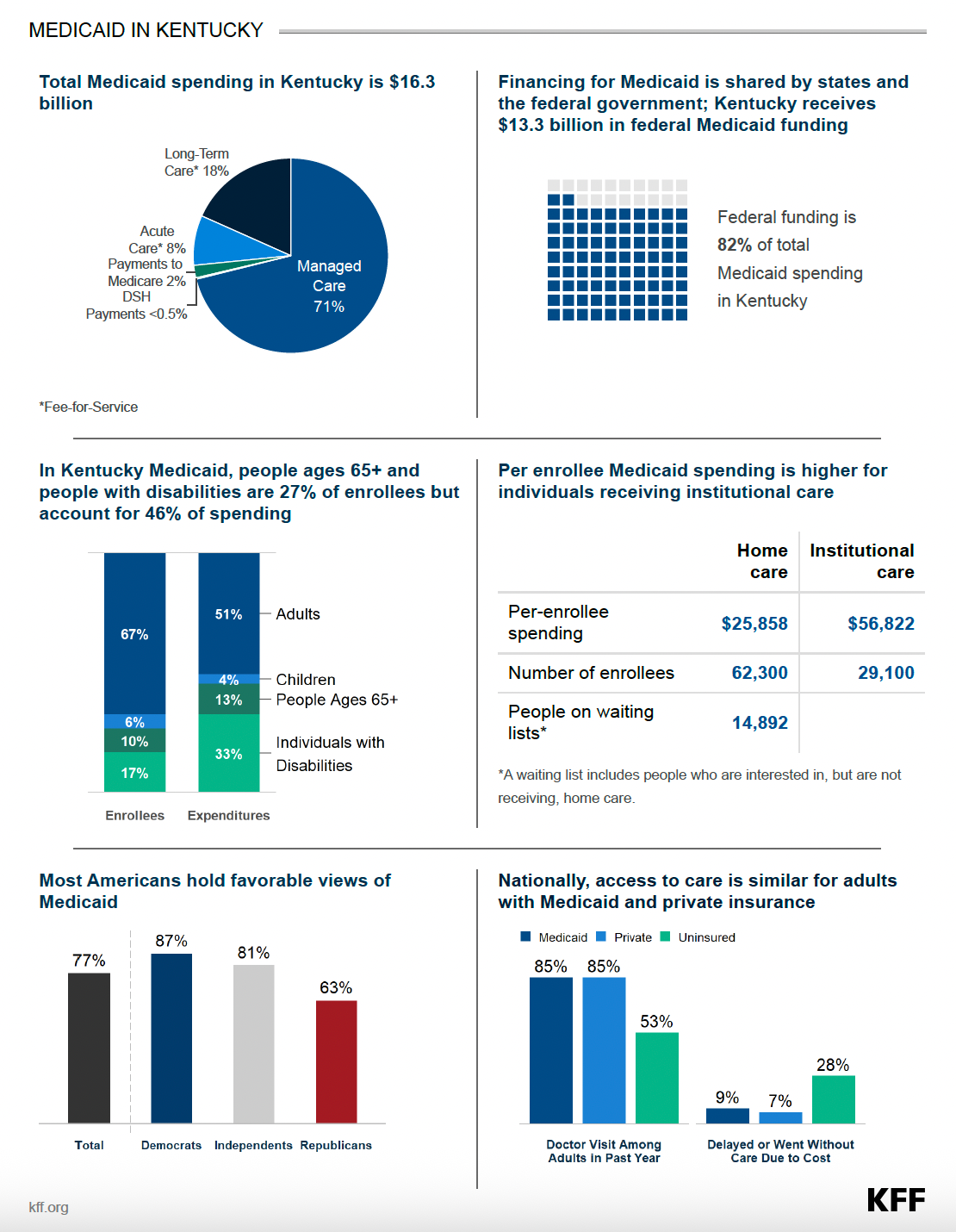Part 3 of the Big Beautiful Bill: Who's on Medicaid?
Kentucky Case Study
Now that the Big Beautiful Bill is the law of the land and has been signed by President Trump, I would like to look to the future and share some insights on important topics and outcomes. Rather than posting a lengthy article, I will share a five-part series on this topic over the next week. You can expect a new article every day at 8:30 a.m. If you want to read the 870-page bill, you can access it here.
Earlier this week, I discussed the administrative burden and its impact on program enrollment. Today, I want to dig a little deeper into Medicaid and shed some light on its use. I am surprised by how many people think this change will not affect them or their community. To anchor our discussion, I will use Kentucky and Northern Kentucky as specific examples. I will share the data source so you can look up Medicaid information in your area.
What You'll Learn This Week:
Today: Medicare vs. Medicaid differences and local usage data
Tomorrow: Tax code changes and impact on your money
Yesterday: Higher Education
Medicare vs. Medicaid: Not the Same Program
Despite similar names, these programs serve completely different populations with different funding structures. I am surprised by how often these two programs are confused in discourse.
Medicare: The Senior Safety Net
Medicare is federal health insurance primarily for Americans 65 and older, plus some younger people with disabilities. Think of it as earned insurance—you pay into it through payroll taxes during your working years.
The Four Parts:
Part A: Hospital stays, skilled nursing, hospice care
Part B: Doctor visits, outpatient services, medical equipment
Part C: Private Medicare Advantage plans
Part D: Prescription drug coverage
Medicaid: The Income-Based Program
Medicaid provides health coverage for low-income individuals and families regardless of age. It's jointly funded by federal and state governments, which means coverage varies significantly by state.
Key Coverage Groups:
Pregnant women and children
Adults in low-income families
Elderly adults needing long-term care
People with disabilities
Medicaid in Kentucky
Using data from KFF (Kaiser Family Foundation), here's how Medicaid usage breaks down locally:
Statewide Overview
1.395 million Kentuckians are enrolled in Medicaid
21-25% of the state's population relies on the program
$16.3 billion total spending in Kentucky (2024)
82% federally funded, 18% state-funded
What Medicaid Covers in Kentucky
44% of all births
46% of all children
68% of nursing home residents
Northern Kentucky Specifics
In the 4th Congressional District (Northern Kentucky):
22% of residents use Medicaid
165,900 total participants
32,200 adults
35,600 individuals with disabilities
61,500 individuals are covered by the Affordable Care Act
Regional Contrast: Eastern Kentucky's 5th Congressional District has a 54% Medicaid enrollment rate, more than double that of Northern Kentucky.
Breaking the "Welfare" Myth
68% of Kentucky Medicaid beneficiaries are currently working. There is an assumption that Medicaid supports people who don’t deserve the support. This program is essential healthcare coverage for working families who can't afford private insurance.
The Takeaway
The Big Beautiful Bill will have a significant impact on Medicaid and the millions of people who depend on it. Understanding who uses Medicaid and how it functions is crucial for grasping what's at stake. You would be surprised how many of your friends and family have received government support, but many don’t talk about it.
-Dr. A
Do you have any questions about today's topic? Reply to this email or connect with me on social media. Tomorrow at 8:30 AM, we'll dive into tax code changes.
Subscribe to receive my economic commentary via email
About the Author
Dr. Abdullah Al Bahrani is an economics professor and an award-winning educator. His research focuses on household finance and economic education. In addition to this newsletter, he has a YouTube channel and an Instagram account to share his economic insights.
Missed Yesterday’s Post?
Part 2 of The Big Beautiful Bill: Higher Education.
Now that the Big Beautiful Bill is the law of the land and has been signed by President Trump, I would like to look to the future and share some insights on important topics and outcomes. Rather than…








It is a really old study but I remember back in the 2010s there was a report that showed 80% of receipts worked in some form. It is a little bothersome that myths are potentially affecting our policies. Especially for the worse. I am troubled by the sheer number of rural hospitals that may close. I traveled a lot od rural areas for my job last year and they need these facilities. I hope it all works out for the best.
Great job, Dr. A! It was a tough topic to teach when I taught Labor Economics because so many students came in with preconceived notions about who is in this program. It was always eye-opening for them to realize how important Medicaid is for children!
I would also emphasize that cutting this funding would cut income for doctors, nurses, and those in the medical field. Its knock-on effects are much bigger!